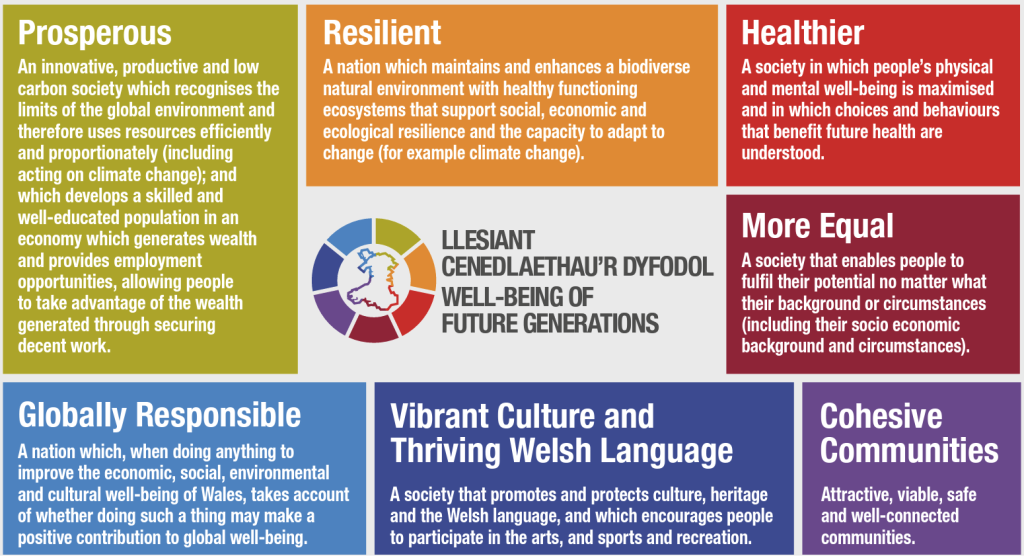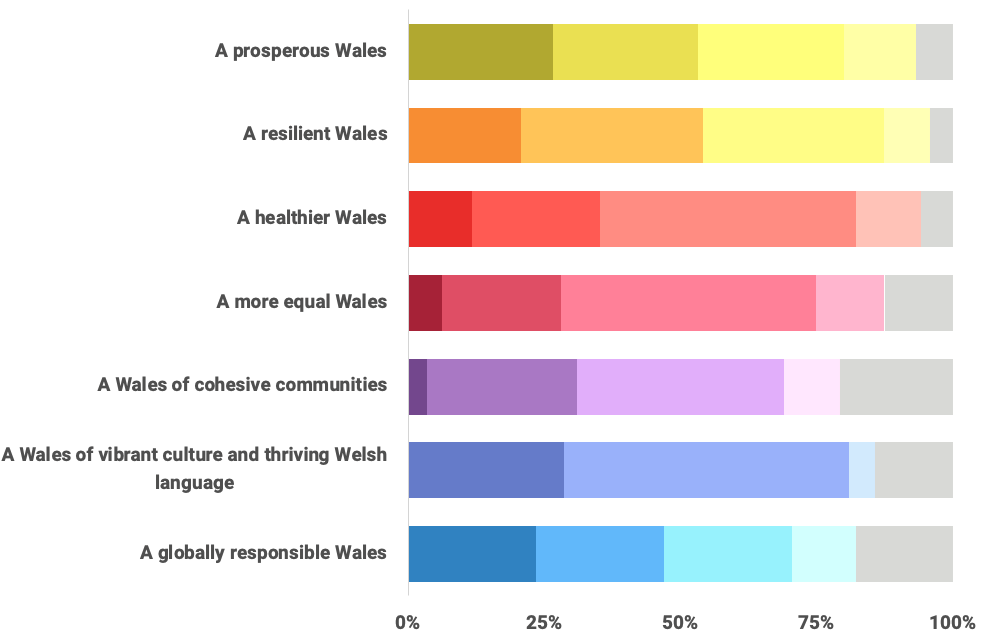
Posted 12.12.25
New Stadium to Boost Aberdeen Economy
Be it plans for a multi-sports community stadium in Aberdeen, a new home for Manchester United, or the...
1 minute read
BiGGAR Economics is working with Bute Energy to consider the social and economic impacts associated with its proposed developments in Wales, including Twyn Hwyel Energy Park. As part of this study, we have considered how the development of the Twyn Hwyel can contribute to the well-being of Wales, either directly or through the programmes it will support in the wider community.
Twyn Hwyel could make a positive contribution to over 80% of the well-being indicators of Wales
Twyn Hywel Energy Park is a proposed onshore wind development on the border between Rhondda Cynon Taff and Caerphilly County Councils in South Wales. The wind farm will comprise up to 14 turbines each with a capacity of 6.6 MW, for a total combined generating capacity of 92.4 MW. It is being developed by Bute Energy who are pro-actively working to maximise the well-being benefits to the local community from this development.
The Welsh Government has put the well-being of its citizens at the heart of its policy objectives through the Well-being of Future Generations Act. This outlines seven goals that it wants to achieve for Wales, covering a range of economic, environmental, social and cultural contributors to well-being.

To support this objective the Welsh Government has outlined 50 indicators, with most indicators contributing to several of the well-being goals.
Throughout our analysis of the socio-economic impacts of Twyn Hwyel Energy Park, we considered how these impacts could contribute to the indicators of well-being in Wales. This found that:

Twyn Hwyel Energy Park has the potential to make stronger contributions to some well-being goals than to others. The extent to which Twyn Hywel contributes to the seven well-being goals was assessed through summing up the number of direct and indirect impacts on national indicators. Overall, the Energy Park itself is expected to have a strong direct impact on at least 3 of the 7 goals, namely:
Overall, the analysis found that Twyn Hwyel could contribute directly to all goals. The chart below shows the extent to which each goal is contributed to, with the darker shading indicating a more direct relationship with the project.

The full Socio Economic Impact Appraisal has been published as part of the planning application and can be found on the Bute Energy website, via the link below. This report also considers the potential to maximise the economic benefits of the project and the performance of other heritage sites that have seen wind energy projects built nearby.
Posted 24.11.22
Our latest news

Posted 12.12.25
New Stadium to Boost Aberdeen Economy
Be it plans for a multi-sports community stadium in Aberdeen, a new home for Manchester United, or the...
1 minute read

Posted 24.11.25
BiGGAR Economics becomes employee-owned
We are delighted to announce that BiGGAR Economics has become an employee-owned company. The shares in BiGGAR Economics...
1 minute read